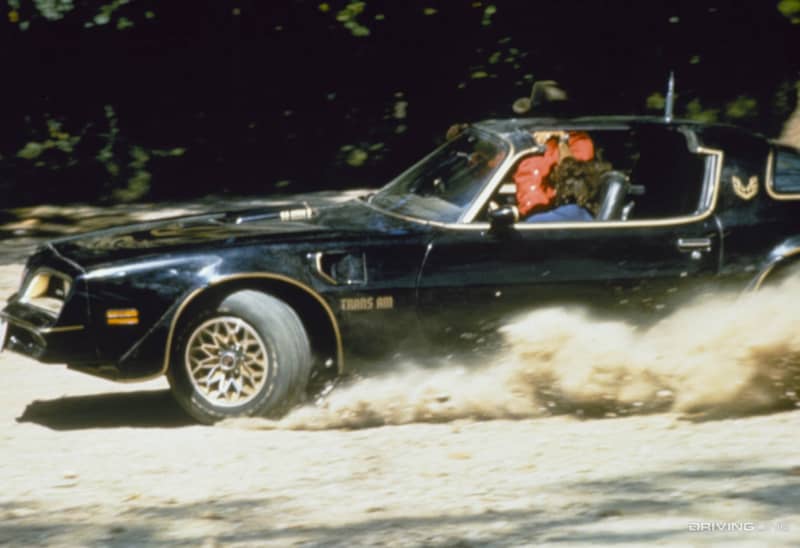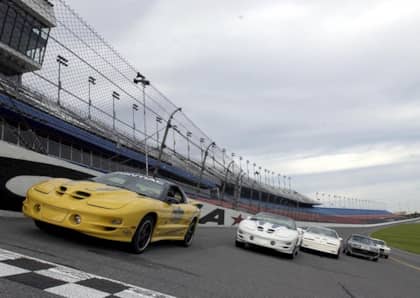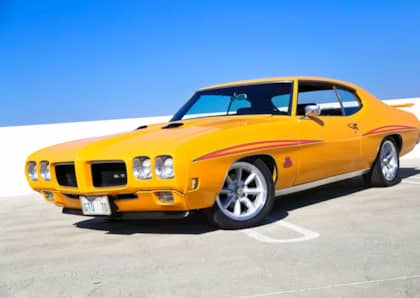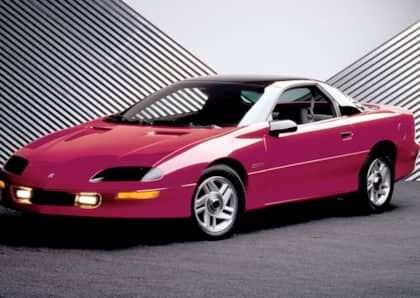A Brief History of the "Bandit" Trans Am: Pontiac's Surprise '70s Film Star
Although Pontiac's most famous performance car has taken many forms over its nearly 35 years of production, there's no question that when you say the word Trans Am there's one image that pops up immediately in the minds of most gearheads: a gold Screaming Chicken decal emblazoned on an all-black hood, rear wheels spinning, with Burt Reynolds behind the wheel.
The tale of the "Bandit" Pontiac Firebird Trans Am is one of the most impressive examples of branding to have ever graced the Silver Screen. It also helped Pontiac fight off the emissions-choked, low-performance image that dogged the entire American auto industry during the Malaise Era, offering a lone bright spot in a dark time for anyone who cared about speed, power or handling.
Thirsty in Atlanta
"Smokey and the Bandit" was written and directed by Hal Needham, a long-time Hollywood stuntman, recently-minted director and roommate of Reynolds (he'd spent 12 years as a guest in Reynolds' pool house). The plot was inspired by a mutual love for Coors beer, which was brewed in Colorado but at the time not sold east of the Mississippi. Over time, the plot evolved into the story about bootlegging that made it into the final draft of the script. The ideation was certainly helped by the many cases delivered to the set of "Gator," which the two were filming together in Atlanta

The Pontiac connection was at first little more than luck. Needham had seen images of the Trans Am in a magazine and become infatuated with the concept of convincing General Motors to let him wreck a fleet of them, on camera, with Reynolds in the driver's seat. The pitch was that a little of the fame would rub off on the brand's sportiest model and help goose sales.
Pontiac was willing to listen, of course—but they had reservations about just how successful "Smokey and the Bandit" would be, so they didn't give Needham carte blanche. Instead of the six Trans Ams he asked for, they provided him with four (along with a couple cop cars). This proved to be the bare minimum required to get the film in the can, as three of the Firebirds were destroyed during filming (with the bridge jump claiming one of the victims), and the fourth getting so beat-up that it had to be pushed around by another vehicle to finish its scenes, as the engine would no longer fire.
Special Edition
The cars that Pontiac delivered to the set of "Smokey and the Bandit" were mongrels, 1976 model year coupes that had been outfitted with the '77 facelift that would be on the market during movie's planned release date. This meant they had the quad headlights and revised grille that would go on to define the Trans Am in the minds of the millions of people who saw the movie, first in theaters, then on VHS and finally on its seemingly endless cable TV re-run tour.
The actual '77 Pontiac Firebird Trans Ams that customers could buy were marketed as "Special Editions," with the Y-82 removable roof panels from Hurst (otherwise known as T-Tops) and a choice of one of two 400 ci V8 engines under the hood.

All black, with a new gold "6.6 LITRE" sticker on the hood scoop, gold snowflake rims and gold interior accents, the car's eight-cylinder engine delivered 180hp and 325 lb-ft of torque in base trim, with another 20hp available via the W72 package. These numbers are pedestrian today, but at the time represented the best Detroit could muster in the face of crushing anti-pollution controls. You could also order a slick-top Y-81 package car, and when equipped with a four-speed manual in place of the available three-speed automatic transmission, this is the rarest of all Bandit-era Pontiacs.
Big Money, on Both Sides
Needless to say, in addition to the $300 million grossed by the film's producers over the course of the ensuing years, Pontiac saw a fairly incredible short-term return on their four-car investment. In the wake of Smokey's success, 1978 saw 93,341 Trans Ams roll out the dealership door, a huge increase over the 68,745 that had been sold the year before. It was a trend that would continue, with a further 117,108 models finding new homes in 1979. It was no surprise, then, that when Needham asked for help when filming the sequel, Pontiac obliged with more than double what they'd originally offered (in the form of 301 Turbo cars).

Slightly less generous was the GM exec who had promised Burt Reynolds a Trans Am of his own if the movie did well. When Reynolds tried to collect, he discovered that the man who had made the promise had retired—and that the new management had no interest in following through on the deal.
Today, the Bandit Trans Am remains a cultural force, with continuation models and pro touring restomods built to resemble the originals that are still plying roads, car shows and drag strips. Few other cars can claim the same kind of late-'70s legacy as Pontiac's Firebird, and it all started with a love of the Banquet Beer.











